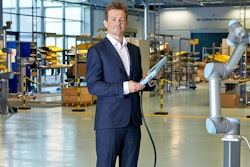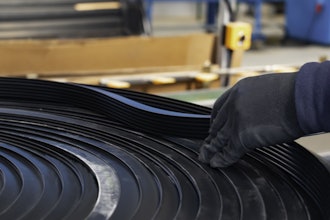Manufacturers are pumping the IoT full of billions of dollars every year — and several claim great success as a result. While some have undoubtedly benefitted more from the IoT than others, there is one problem: What do we do with all the incoming data?
To address this growing issue, manufacturers turn to various data management strategies.
While some find one works best in their case, others use a combination of tactics to deal with the flood of new information. Here are four real-world examples of tactics some companies have tried.
Improve Production Through Automation
Tech-savvy manufacturers already use the IoT in production flow planning and monitoring. Not only does this eliminate unnecessary waste and improve factory sustainability, but it ultimately results in increased profitability in the long run.
Lido Stone Works recently automated much of their production activities, and they've already experienced a 30 percent increase in productivity. Their new equipment features built-in diagnostics and communications, which minimizes strain on maintenance technicians.
Bolster Safety and Security
While breakthroughs like the IoT are a boon to manufacturers, they pose a myriad of new risks and dangers that weren't necessarily a concern in the past. It's best to tackle digital safety on a case-by-case basis. In an industrial plant, digital security might use systems that require two-factor authentication (2FA) or video analytics to detect chemical spills.
Smart factories often use cameras that automatically focus on a specific area during an alert or alarm. In many ways, both digital and physical security complement one another in the next-gen factory or warehouse.
Wearable devices are equipped with built-in sensors that monitor air quality levels, detect the presence of dangerous chemicals and alert the user when they're approaching unsafe conditions. Other devices, like a tool by SmartCap Technologies out of Australia, monitor truck drivers and equipment operators for levels of fatigue or drowsiness.
Enhance the Supply Chain
Next-gen technology provides an exciting juxtaposition regarding product visibility. While consumers are tracking deliveries like pizza and their next Amazon shipment, many Fortune 500 companies can't even monitor the status of shipments worth millions of dollars.
The IoT hopes to solve that issue by providing increased visibility throughout every step of the modern supply chain.
In its current form, the IoT is ideal for tracking and managing assets — including raw materials, finished goods and even personnel. Tech-savvy manufacturers use sensors to collect, monitor and transmit data to their analysts.
Such data has the potential to uncover new, faster delivery routes, maintain temperature-controlled environments more efficiently and ensure product integrity before a shipment leaves the warehouse.
Such transparency and visibility wouldn't be possible without a highly mobilized workforce and innovations like the IoT.
Strengthen the Customer Experience
Manufacturers are also using the IoT to strengthen the overall customer experience. In the retail sector, customer service often involves face-to-face interaction with the general public. But in manufacturing, this usually amounts to negotiating with third-party distributors over pricing, shipping logistics or project scheduling.
Regardless, paying customers are the lifeblood of any manufacturer. That's why many companies use the IoT to cultivate strong professional relationships with their customers — and it has much to offer. From computer systems that accurately forecast inventory needs to greater visibility of products and services, the IoT is already changing the way manufacturers interact with customers.
Kaeser Kompressoren, known as Kaeser Compressors in the United States, now offers compressed air-as-a-service — which spares customers the expense of having to purchase industrial-scale air compressors and machinery.
Find What Works and Stick to It
The IoT isn't a standardized solution to any specific problem. Instead, it's a highly flexible and adaptable tool that caters to several individual needs. While some use the IoT for rapid costing, plant load optimization or advanced reporting, others use it on the factory floor and right alongside human workers. Find what works for your company, then stick with it.























